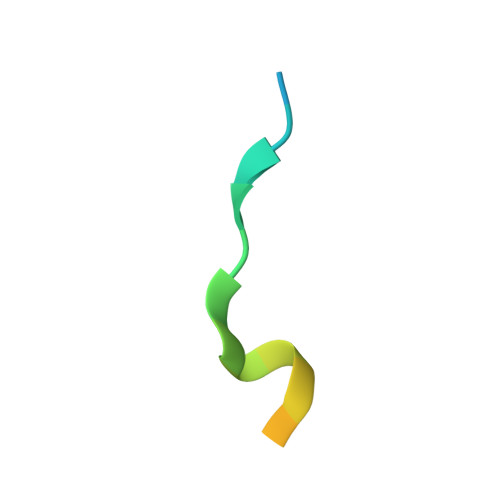The C-terminal domain of yeast PCNA is required for physical and functional interactions with Cdc9 DNA ligase.
Vijayakumar, S., Chapados, B.R., Schmidt, K.H., Kolodner, R.D., Tainer, J.A., Tomkinson, A.E.(2007) Nucleic Acids Res 35: 1624-1637
- PubMed: 17308348
- DOI: https://doi.org/10.1093/nar/gkm006
- Primary Citation of Related Structures:
2OD8 - PubMed Abstract:
There is compelling evidence that proliferating cell nuclear antigen (PCNA), a DNA sliding clamp, co-ordinates the processing and joining of Okazaki fragments during eukaryotic DNA replication. However, a detailed mechanistic understanding of functional PCNA:ligase I interactions has been incomplete. Here we present the co-crystal structure of yeast PCNA with a peptide encompassing the conserved PCNA interaction motif of Cdc9, yeast DNA ligase I. The Cdc9 peptide contacts both the inter-domain connector loop (IDCL) and residues near the C-terminus of PCNA. Complementary mutational and biochemical results demonstrate that these two interaction interfaces are required for complex formation both in the absence of DNA and when PCNA is topologically linked to DNA. Similar to the functionally homologous human proteins, yeast RFC interacts with and inhibits Cdc9 DNA ligase whereas the addition of PCNA alleviates inhibition by RFC. Here we show that the ability of PCNA to overcome RFC-mediated inhibition of Cdc9 is dependent upon both the IDCL and the C-terminal interaction interfaces of PCNA. Together these results demonstrate the functional significance of the beta-zipper structure formed between the C-terminal domain of PCNA and Cdc9 and reveal differences in the interactions of FEN-1 and Cdc9 with the two PCNA interfaces that may contribute to the co-ordinated, sequential action of these enzymes.
Organizational Affiliation:
Radiation Oncology Research Laboratory, Department of Radiation Oncology and The Marlene and Stewart Greenebaum Cancer Center, University of Maryland School of Medicine, Baltimore, MD 21201-1509, USA.















